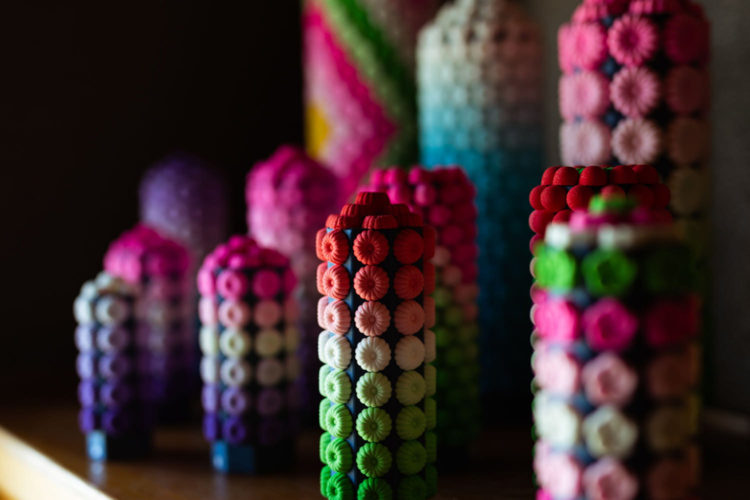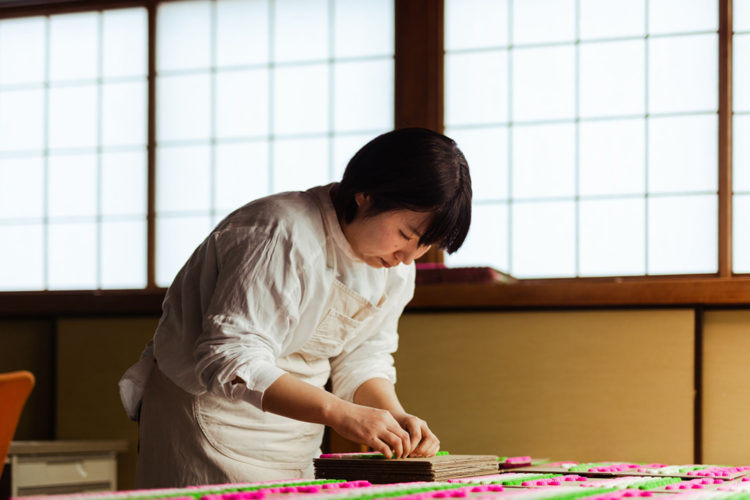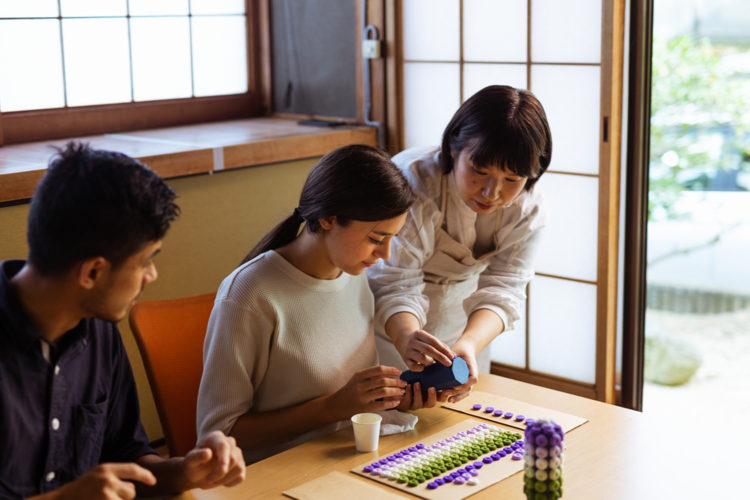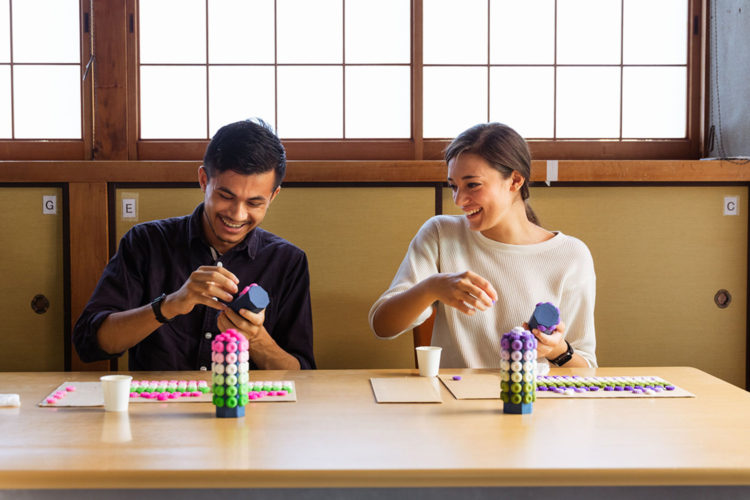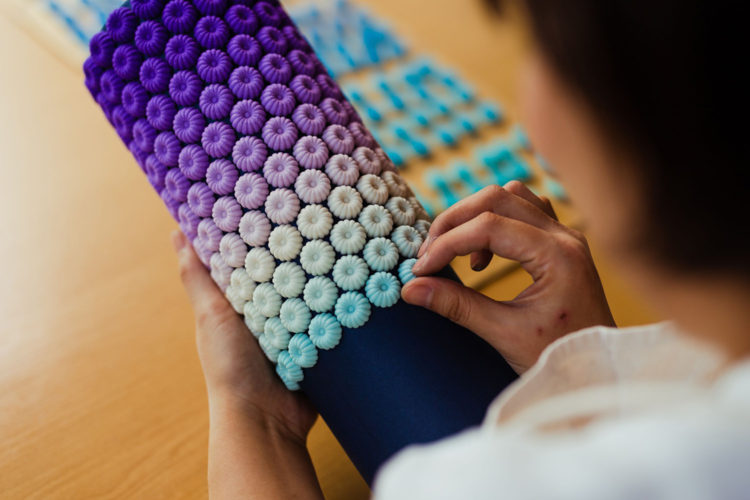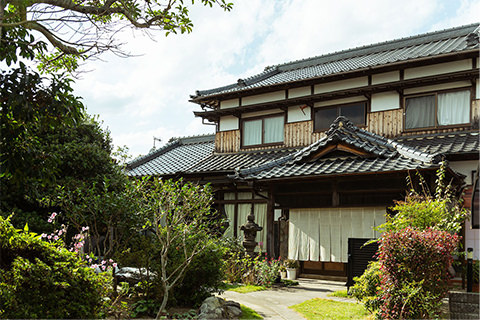Make Candy Sculptures with an Expert Craftsperson (2.5hrs)
Since ancient times, the Japanese people have paid respects to their ancestors and Buddha by offering rakugan, a hard candy made of two highly-valued ingredients throughout Japanese history: rice and sugar. Rakushindo Hompo is a confectionary shop that specializes in making rakugan used for religious offerings. The workshop is located in the Chikugo region of Fukuoka Prefecture, along a historical sugar trade route that stretched from Nagasaki to Tokyo during the Edo Period (1603-1868). Confectionery culture also flourished in Chikugo during the Meiji period (1868-1912), when confectioners provided sweets to coal miners in the industrializing region. Rakushindo gives an artistic update to tradition, making rakugan sculptures in over 100 different types of designs. In the Japanese countryside rich with natural beauty, enjoy a relaxing rakugan-making experience with an expert craftsperson.
- ● Visit a unique workshop that creates a dazzling variety of designs and colorful gradations of rakugan sculptures
- ● Visit a unique workshop that creates a dazzling variety of designs and colorful gradations of rakugan sculptures
- ● Enjoy an exquisite pairing of matcha and rakugan
- ● Take home the rakugan sculpture you make during the experience as a souvenir
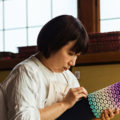
- Tomoko Ooi
- Born in Fukuchi, Fukuoka Prefecture (formerly known as Kanada). After graduating high school, she studied at Bunka Fashion College in Tokyo to become a fashion designer. After working in Tokyo, Ooi returned to Fukuchi in 2014 to take over the family business. She is currently the vice-director of Rakushindo Hompo.
Rakugan and the Culture of Religious Offerings
Rakugan are dried confections made by mixing flour and sugar, pressing them into molds, and drying them. They were introduced from China in the Muromachi period (1336-1573) and became popular as sweets used during tea ceremonies. Not only sweet in taste, but also beautiful to look at, rakugan are popular all over Japan. They are also used as offerings before the Buddha during the Obon holiday and Buddhist rites. Japanese people have long had the custom of offering precious objects and gifts to Buddha before eating them, to express gratitude to one’s ancestors and Buddha. This culture of offering rakugan remains a remnant of the time when sugar was a precious commodity within Japan.

Rakushindo Hompo
Unlike most confectioneries across Japan that make rakugan sweets for human consumption, Rakushindo is unique in that it specializes in making rakugan sculptures used for religious offerings, a craft that requires a particularly high level of skill and artistic sense. To make these elaborate creations, Rakushindo Hompo has developed over 200 different colors of rakugan through a process of trial and error, in contrast to a more standard set of 10 colors used by the majority of sweet makers. This variation in color allows Rakushindo to create its signature gradient designs. Rakushindo Hompo creates work in shapes and colors that reflect our modern moment, in order to pass on the beauty and spirit of this Japanese craft on to future generations.
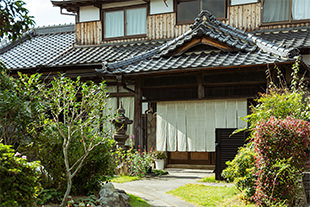
Making Rakugan with Artisans
Pass through the white curtains of Rakushindo Hompo and enter its tatami room in the back, upon which you will be greeted by a wide variety of colorful rakugan. While looking at these artistic creations, enjoy a break with a cup of matcha green tea paired with Rakushindo Hompo’s rakugan. Afterwards, rakugan-maker Tomoko Ooi will introduce the art of rakugan offerings.

With the help of an illustrated manual, experience the processes of coloring, shaping, and decorating rakugan sculptures. Craftspeople express their gratitude to Buddha and one’s ancestors through each and every rakugan they attach, a healing process akin to meditation. Precisely because of this simplicity, rakugan-making requires skill and sense, an art that requires immense artisanship.
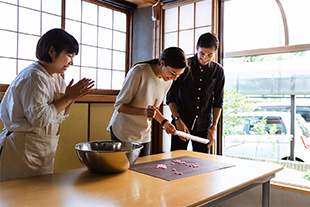
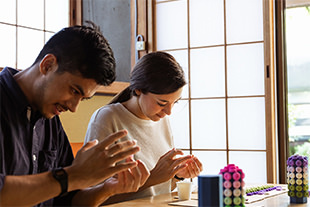
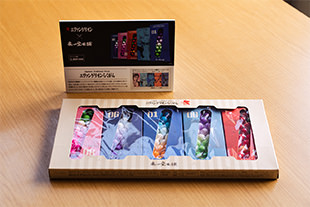
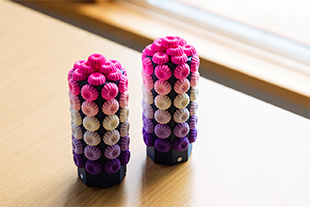
| Tour Code | GFTG01 |
|---|---|
| Dates | Weekdays, Every 1st and 3rd Saturday 13:00~※ Please send us your preferred date(s) through the inquiry form. We will confirm availability with the workshop and notify you as soon as possible.※As the workshop’s busy season runs from June to August, tour applications will not be accepted during this period. |
| Duration | 2.5 hours |
| Schedule |
<Nearby Sights>
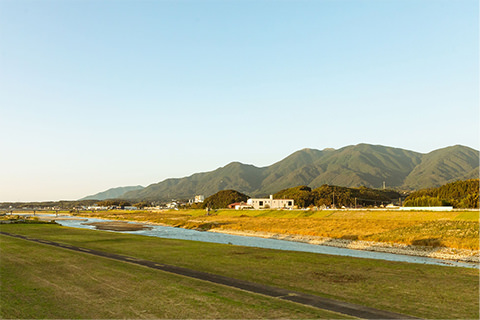 |
| Languages | Japanese●Supplementary explanations in English via translation device or lecture board can be provided upon request. Please make a note in the message box during registration to request this service.※An English interpreter can also be arranged for an additional fee. Please contact UNA Laboratories for more details. |
| Participants | Minimum 2/Maximum 6 |
| Meeting Place |
Rakushindo Hompo |
| Reservation Deadline | 10 days before the start of the tour (for example, please reserve by October 5th for a tour that starts on October 15th)
|
| Payment Method | Advance payment at the time of reservation (VISA, Mastercard, Amex, JCB) |
| Attire | No special requirements |
| Please Note |
|
| Cancellation Policy | 3 to 1 day(s) preceding the tour start date: 50% of the tour fee |
Travel Planning: Implementation
- UNA Laboratories Inc. (Fukuoka Prefectural Governor Registration #2-951)
- 3-12-22-302 Yakuin, Chuo-ku, Fukuoka-shi, Fukuoka Prefecture 810-0022
- TEL: 092-982-7956E-MAIL: tour@unalabs.jp
- Domestic Certified Travel Supervisors:
Aya Tamura, Noriko Yahata, Rei Watanabe - Business Hours:
9:00 a.m. to 5:00 p.m. Monday through Friday (Closed Saturdays, Sundays, and Holidays) - *Requests received outside of business hours will be processed the following business day.
- *Domestic Certified Travel Supervisors are responsible for transactions held at the sales office that processes customers’ travel. Please do not hesitate to contact the aforementioned Domestic Certified Travel Supervisors with any questions or concerns regarding the travel contract.
Tour Information
- Dates
- Weekdays, Every 1st and 3rd Saturday 13:00~※ Please send us your preferred date(s) through the inquiry form. We will confirm availability with the workshop and notify you as soon as possible.※As the workshop’s busy season runs from June to August, tour applications are not be accepted during this period.
- Duration
- 2.5 hours
- Recommended Age
- Suitable for All Ages
- Price
- 8,500yen (tax included)
- Remarks
- ※ Material fee included
※ Guests under 12 can accompany a parent or guardian on the workshop visit (without rakugan making) for free.

